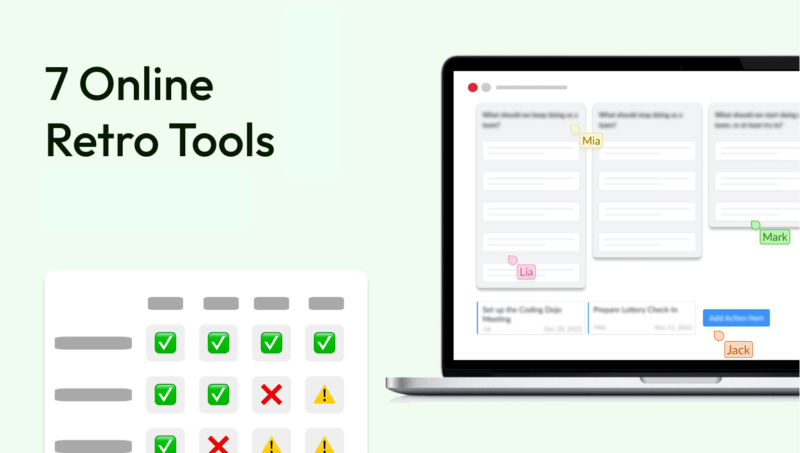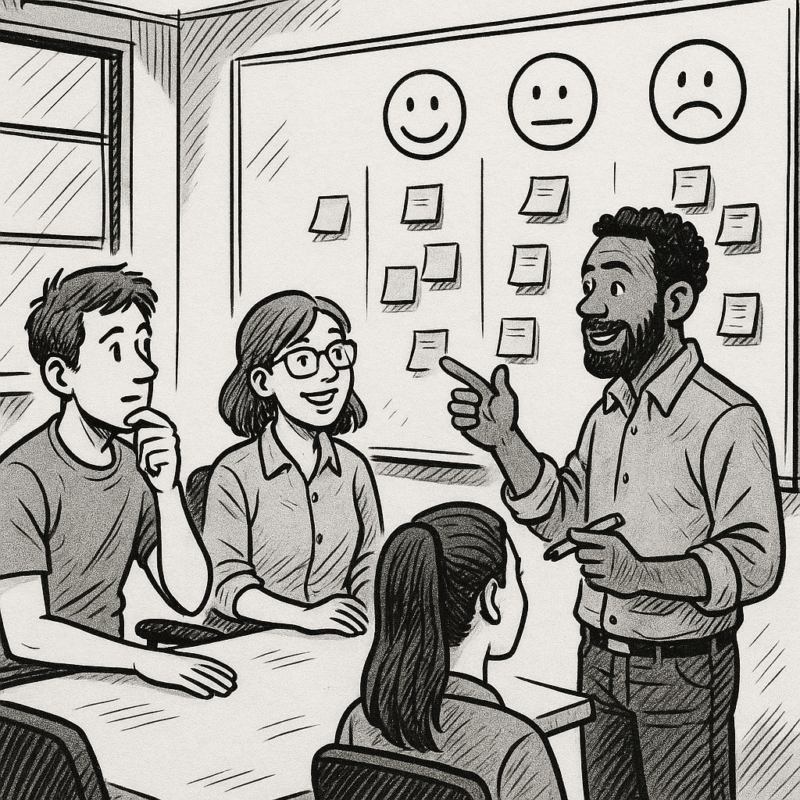How satisfied are my employees? Are you motivated and committed? Classic employee surveys are still popular for measuring the working atmosphere. They have been established in companies since the 1960s, but are they also the best feedback tool in the rapidly changing agile world?
They regularly conduct 80% of the large German companies: employee surveys (Hossiep & Frieg, 2018), One of these companies is Daimler: The Stuttgarter Zeitung has just reported on the Results of the current survey of the automotive group. “Discuss the results in your team” - is an instruction to the employees. The question arises whether a discussion of the results is already enough? Is that enough to turn a classic employee survey into an agile instrument?
Problems of classic surveys
The situation is well known among HR professionals: Every second year, a long questionnaire to record employee satisfaction and the working atmosphere is created, sent out and evaluated. The results will be presented a few months later. Unfortunately, it turns out that the majority is no longer representative: managers have left, departments have restructured and projects have been completed.
The organizational structures are also subject to this change. Hierarchical systems become agile networks, decisions are no longer made from the top down, but at the team level. A change that is also taking place at Daimler: By 2020, around 20 percent of the company should be agile Swarm structure work.
The popular movement towards agile teams should not be slowed down by pushing measures that follow an employee survey top down. A discussion of the results in the team, as suggested at Daimler, is therefore a start. However, so that teams can operate independently, they should identify the main problem areas from the results of a survey and derive individual measures. You can find more information about how Echometer initiates this continuous improvement process right here.

Pulse surveys - the solution?
For some time now, a new feedback tool has been gaining popularity - pulse surveys. If you are not yet familiar with the concept, here are the most important things:
Pulse surveys are carried out at short intervals and contain only a few questions each.
From them, executives hope to gain current insights into the pulse of the company. For example, you can understand how change processes affect employee satisfaction. But how can this promise be kept?
Since pulse surveys are carried out so frequently, the personal responsibility of the teams plays a greater role than in classic employee surveys.
But: nevertheless, the results are typically with the managers. You are responsible for deriving measures.
Where's the responsibility?
The team or individual employees are also not responsible for heart rate surveys.
Instead of the manager thinking about measures for their teams every two weeks, they should give the teams the opportunity to plan their own measures. Respectively. develop them together with the team - for example in a retrospective.
In the agile retrospective, the team could discuss results autonomously and quickly.
In fact, that's exactly the goal of Echometer: A combination of a pulse survey and a digital coach that helps teams to use the results of surveys in a targeted manner - in order to derive measures themselves in retrospectives.
Simple feedback loops can thus become a continuous, employee-driven improvement process.
Conclusion
Agility is high on the agenda of many companies. Frequent, action-oriented employee feedback is not only a big step in the direction of an agile corporate culture, but also an imperative consequence of the changes in the VUKA world.
However, it turns out that simply introducing pulse surveys as a feedback tool is not enough. The teams must also be given the opportunity to control individual change processes themselves, so that an effective and agile feedback culture can emerge.
From our perspective, an optimal agile event for this is the retrospective.
Employee surveys and agility are not contradictory concepts: if they are combined with continuous discussions at team level, they can even complement each other optimally.
References
Frieg, P., & Hossiep, R. (2018). Employee surveys - still an established classic among companies. Wirtschaftspsychologie aktuell - journal for personnel and management, 2018 (4), 13-16.
Hossiep, R., & Frieg, P. (2008). The use of employee surveys in Germany, Austria and Switzerland. Planning & analysis, 2008 (6), 55-59.
Rexroth, H. (2016). Future of employee surveys. Bottom-up instead of top-down. In Keller, B., Klein, H.-W. & Tuschl, S. (ed.), Market Research of the Future & #8211; Human or machine? (Pp. 263-280). Wiesbaden: Springer Gabler.








